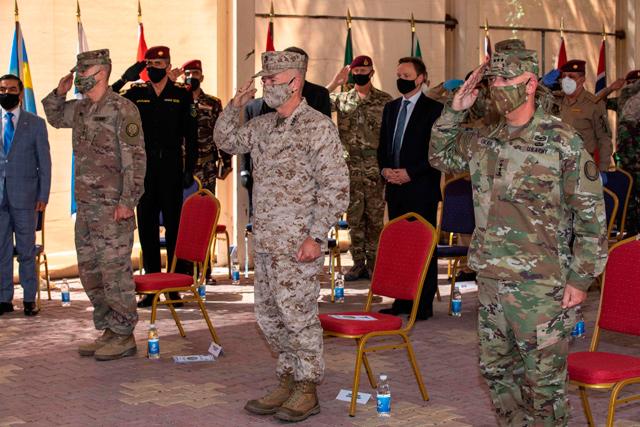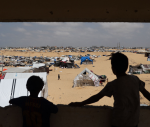You are here
US moves pilot rescue aircraft closer to battlefield
By AP - Feb 06,2015 - Last updated at Feb 06,2015
WASHINGTON — The US military has moved search-and-rescue crews to northern Iraq in recent days, following an uproar over the killing of the Jordanian pilot captured in Syria by Islamic State (IS) fighters, defence officials said Thursday.
The action is intended to shorten response times for search-and-rescue teams.
The US officials spoke on condition of anonymity because they were not authorised to speak by name about a move that has not been announced.
IS militants have extremely limited air defences, and the Syrian government has not challenged US or coalition aircraft flying over its territory. Even so, combat pilots face the risk of going down behind enemy lines, and they are trained in coordinating with search-and-rescue crews.
US pilots are flying missions over Syria daily from bases in the region. Partner nations, including Jordan, Saudi Arabia and Bahrain, are flying less often. The United Arab Emirates suspended its participation in air strikes in December after the Jordanian pilot was captured, but it may reconsider soon after getting extra training, two officials said.
Lt. Muath Kasasbeh, whose F-16 crashed over Syria in December, was captured by IS and taken to an unknown location, where he was held until his captors killed him by burning him alive in a cage on January 3.
US officials have sought to play down the Emiratis’ decision to stop launching air strikes, and have focused instead on Jordan’s determination to step up the fight against the IS. Jordan’s military said Thursday that it had launched a new round of strikes against IS targets in Syria.
Combat missions also are being flown daily over portions of Iraq, mainly in the north and west. The majority are flown by American pilots, though France, Belgium, Britain, the Netherlands, Australia, Canada and Denmark also are flying missions.
The US typically keeps a tight lid on information about its combat search-and-rescue capabilities in a war zone in order to maximise the effectiveness. The missions usually are led by the air force’s pararescue jumpers, or PJs, who undergo extensive training to be able to find, rescue and provide medical treatment to aircrew members behind enemy lines or at sea.
US Central Command, which is responsible for the American part of the military campaign in Iraq and Syria, has not said publicly why it did not previously expand the search-and-rescue crews in northern Iraq.
Peter Mansoor, a retired army colonel who served in Iraq, said Thursday the Iraqi government may have objected to having such teams based in the Kurdish north for political reasons.
“You want to be as close as possible to where a downed pilot could potentially be so that you could get to him quicker,” Mansoor said in a telephone interview from Ohio State University, where he teaches military history.
“It could be that the Iraqi government wouldn’t allow it before,” he added. “It no doubt is based out of the Kurdish region,” which is a semi-autonomous area with its own defence forces, known as the peshmerga.
It’s also possible that Gen. Lloyd Austin, the Central Command commander, believed that prior arrangements for search-and-rescue crews were adequate. The loss of the Jordanian pilot and the UAE suspension of combat flights may have changed that assessment.
“Maybe the military felt comfortable with what they had in place until recent events have shown how critical it is to have [rescue crews] really close,” Mansoor said.
White House spokesman Josh Earnest said this week that the US has “taken the necessary precautions to do everything we can to try to make that very dangerous mission as safe as possible for American fighter pilots who are putting themselves in harm’s way.”
Administration officials have said pilots of coalition nations are afforded the same protections and resources as Americans. “There is no risk coalition airmen are taking that American airmen don’t share,” a State Department official said.
Related Articles
The United Arab Emirates pulled out of the air campaign fighting Islamic State (IS) militants after the capture of a Jordanian pilot who has since been killed by the extremists, The New York Times reported Wednesday.
International airlines steered clear of Iraq on Friday after Washington banned American air carriers from Iraqi skies in the immediate wake of US air strikes on Islamist fighters.
BAGHDAD — Washington will slash numbers of American troops in Iraq to 3,000 in September, drawing down the bulk of the US-led coalition help
















